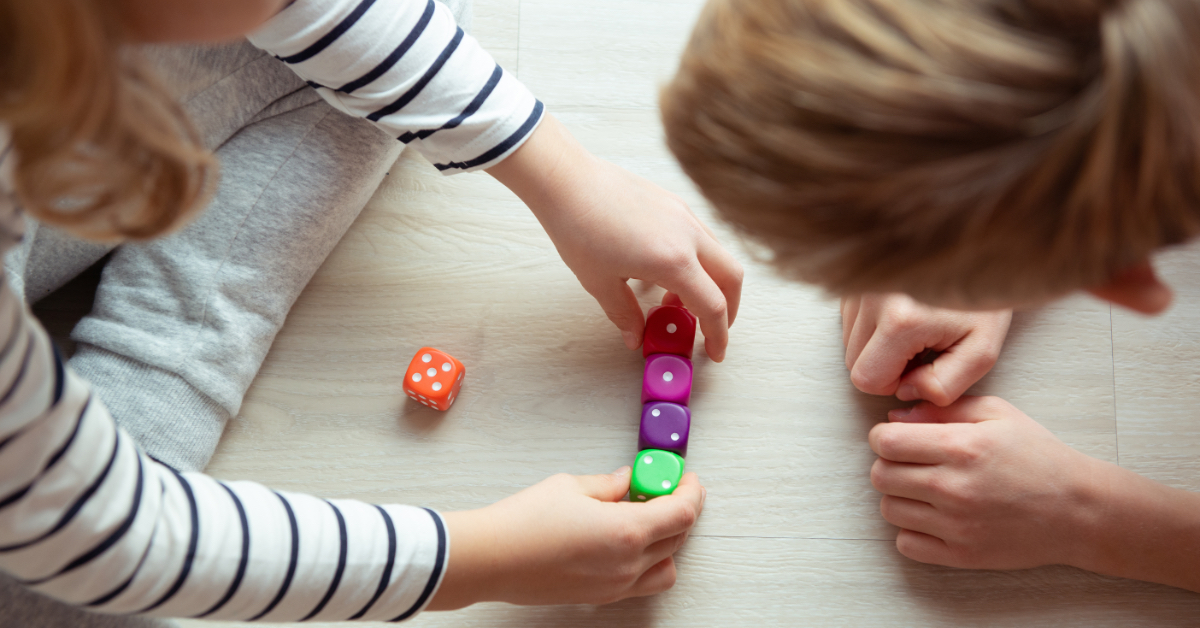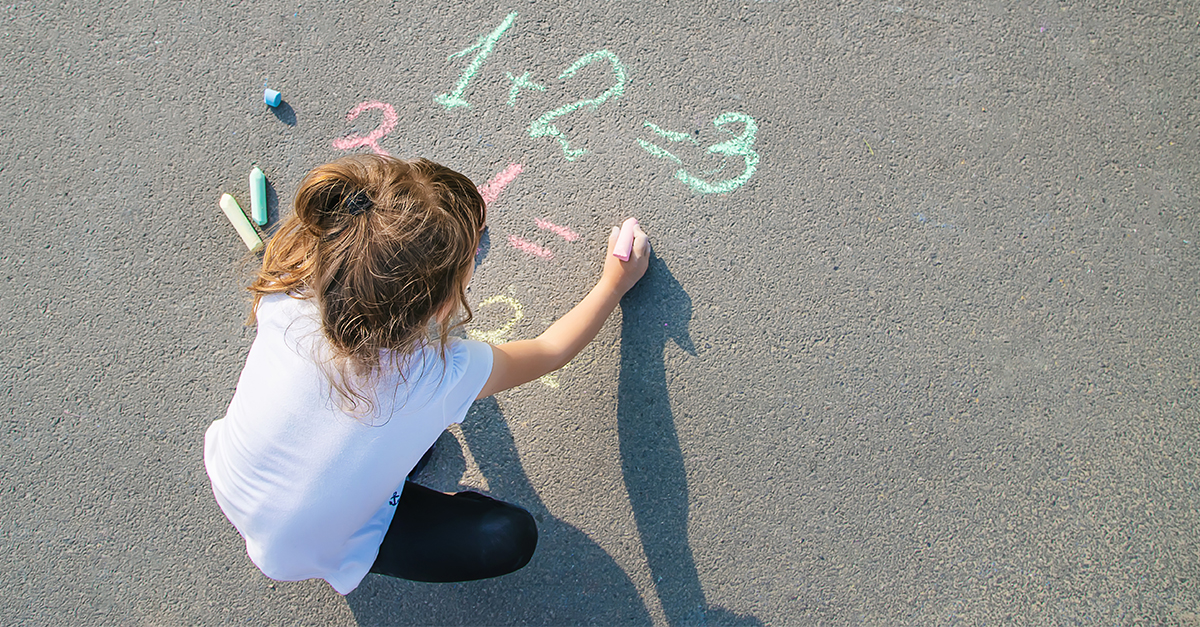
When it comes to learning math, you know that building a good foundation is essential. Your goal is to produce confident problem solvers who enjoy the study of math. You want your student to learn and master the underlying concepts of math that are critical to successful problem solving. Once mastery is demonstrated, how can your student continue to extend, practice, and make meaningful connections with a concept or skill in new and fun ways?
As a parent you can take advantage of down time on rainy days and summer break, waiting for an appointment, driving in the car, or strolling through the park to broaden and enrich your student’s understanding of math. The two simple math activities outlined below can be effective ways to strengthen and extend fundamental math skills.
Playing with numerical cards can reinforce concepts such as comparing quantities and place value, as well as basic operations. To play this game you will need index cards or squares of paper, scrap paper, and pencils.
Greater or Less?
Concepts: numeral recognition, meaning of numbers, place value, inequalities
Cards: Create a deck of cards with numerals written on them based upon your student’s mastery of place value and number sense. For example, for a beginning student you may only use the numerals 0-9, and for an older student you may write a variety of greater numbers in the hundreds and higher. You can have your student help you decide how many cards to make and then create them together. The minimum number of cards suggested is 10 per person.
How to play: Shuffle the cards and distribute them evenly. Each player makes a pile and places the cards face down. Two players will each draw one card from their respective pile simultaneously and compare the numbers. Ask the following questions: Is my card greater or less? How did you decide this? How many more? How many less? The greater number wins that round. The winner makes a tally mark on the scrap paper to indicate a win and takes both cards. If both cards are equal, repeat the process until one player has a greater number. For students who are ready for an extra challenge, draw two cards at a time and find their sum or difference. Then determine who has the greater number from that answer. For a twist on the game you can change the rules and have the winner be the person who has the number with the lesser value.
Coins are great on-the-go resources. They can be used to help your student develop an understanding of patterns and solving for an unknown. In addition, playing with actual coins can help your student gain a deeper understanding of their values as well as help in the beginning stages of addition and multiplication. For this game you will need pennies, nickels, dimes, and quarters.
How Much Is in my Pocket?
Concepts: solving for an unknown, addition and subtraction of decimals, problem-solving, critical thinking
Coins: Varying amounts of pennies, nickels, dimes, and quarters in your pocket or out of the student’s sight, such as under a cup or in a bag.
How to play: Place a set value of coins in your pocket. Provide your student clues about the number of coins and their total value. For example, “I have three coins in my pocket. They are worth 11 cents. What coins could I have?” Answer: 2 nickels and 1 penny. If this becomes too easy, you can begin to present problems that have more than one possible answer. For instance, “I have six coins in my pocket. They are worth 30 cents. What coins could I have?” Answer: 1 quarter and 5 pennies or 6 nickels. You can continue to enrich by having the student determine the number of coins when given a total value. Again, having problems that have more than one answer will provide an added challenge. See if your student can identify all the possibilities. An example might be, “I have several coins in my pocket. They have a total value of 16 cents. How many coins could I have?” Answer: 16 pennies; 1 dime and 6 pennies; 1 dime, 1 nickel, and 1 penny; 2 nickels and 6 pennies; 3 nickels and 1 penny.
You and your student can have fun with mathematical possibilities every day. It is important to keep in mind that these activities are meant for practice and to enhance your student’s understanding of a concept and are not meant to be a replacement for instruction. Keep review practice fun and meaningful, and enjoy spending time together!




Leave a Reply